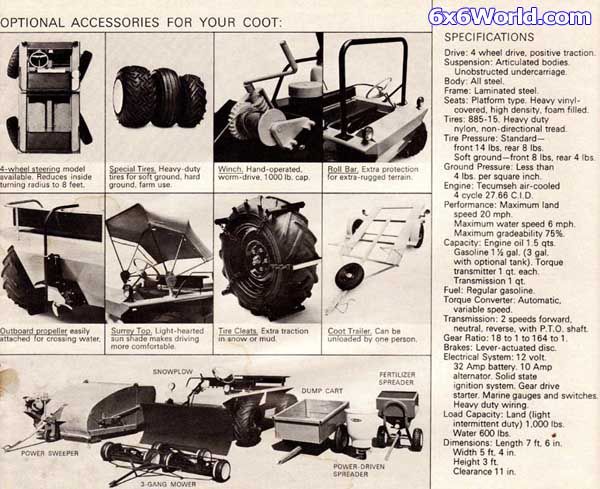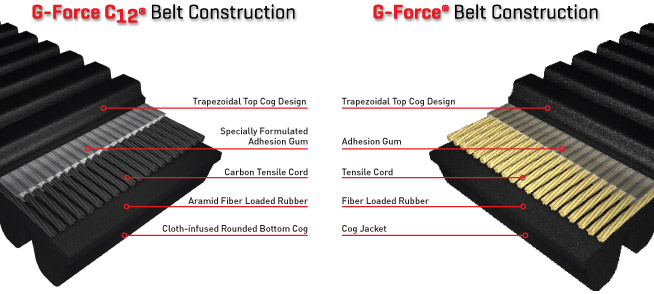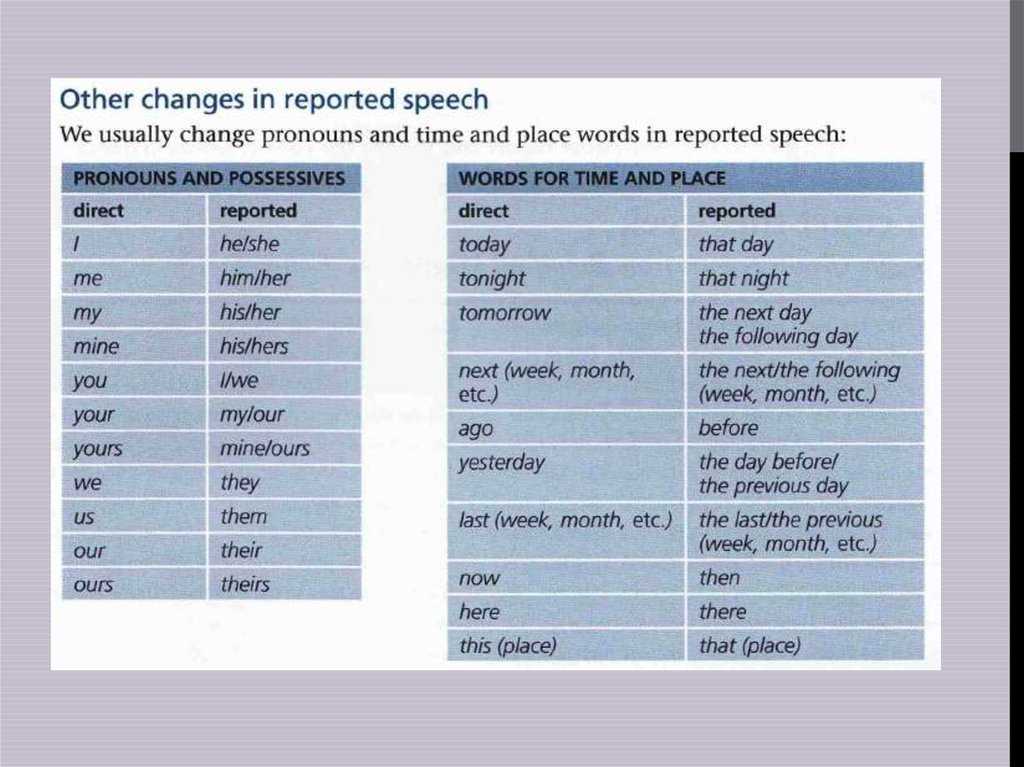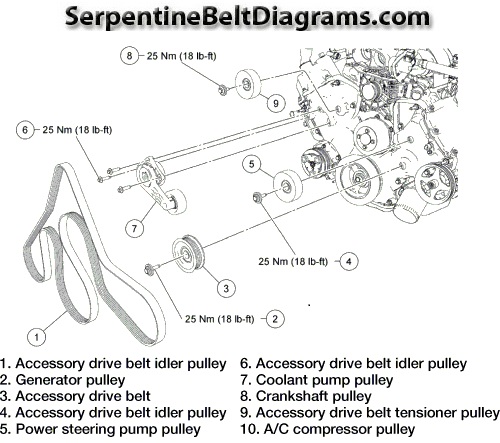Did you know that in 2020 there were 56,789 new ATVs sold in Canada? With a growing number of people wanting to experience adventures in off-road terrain, the number of broken ATV belts has also increased.
A broken ATV belt is a common issue that affects most ATV drivers. It can be frustrating and even dangerous which is why knowing how to prevent the damage is vital.
Let us take a closer look at ATVs, their belts, and how to prevent this common issue.
An ATV belt is a Continuously Variable Transmission, or CVT, drive belt. On any four wheeler, the drive belt transfers power from the engine and directly affects your ATV's performance.
A CVT belt is a type of V belt. This means that the side of the belt is what will be doing most of the work, like treads on a tire do. The faces of the sheaves provide traction, which is why the angle of the belt's sides much be compatible with the faces of the CVT.
There are different types of ATVs and each one can have more or fewer vulnerabilities in its belt and clutch system. Let us look at some of the options.
These four wheelers are made for speed. They have powerful engines, excellent handling, and long-travel suspension, all on a light frame. They are built for swerving and sliding, allowing you to handle any kind of terrain.
Utility ATVs, also called UTVs, are made for the working man or woman. They range from 800cc to over 1,000cc in engine size, making them a perfect machine for towing and managing cargo. UTVs do very well in farm settings.
These ATVs are comparable to a golf cart in size but they have the same power as a sport ATV. Their engine is even more powerful since they are designed to carry cargo as well as passengers. Recreational ATVs also have the best travel suspension of all of the options.
A youth ATV has an automatic transmission so that younger people do not have to worry about gear shifts. They tend to not have much travel suspension and can only handle about 100 pounds of weight.
They tend to not have much travel suspension and can only handle about 100 pounds of weight.
If you do minimum upkeep and have a branded belt, you can expect it to last a substantial amount of time. In the best conditions, belts can last between 3000 to 5000 miles.
If you ride on the weekends for fun, you will want to replace the belt every three years. If you ride for more than 8 hours a week, however, you will need to change the belt every year.
If you are an ATV racer, you want to check the belt after two or three races.
The belt and clutch system have to manage a few things at the same time. It has to transmit the power the engine creates through the belt. The clutch grips the sides of the belt and squeezes to accelerate the ATV and all of the weight it is carrying. While that is happening, the belt is also rotating quickly to spin the secondary clutch.
At the same time, the belt has to shift up and down in both clutches to handle changes in load. The belt manages to do all of this in temperatures that range from minus 30 degrees to 200 degrees.
The belt manages to do all of this in temperatures that range from minus 30 degrees to 200 degrees.
There are many reasons why your ATV belt may fail. Let us dive deeper into the most common causes of failure.
This is perhaps the most common reason ATV belts fail but it is also one of the easiest to fix.
Aggressive engagement RPM can cause tensile cord breaks, which means the belt is torn in two. Most of the best quality drive belts are reinforced with aramid or carbon cords, but you still want to be cautious in your throttle applications.
Repeated shock-loading or excessive belt speed can cause the belt to break into many small pieces, and if you leave the ATV idling for long periods of time or use wide-open throttles, you can cause what is known as hour-glassing. It means uneven wear on the belt.
Not taking care of the drive belt is something that can cause a world of trouble. One of the most common issues you may see is "chunk-out".
One of the most common issues you may see is "chunk-out".
This happens when a belt is not installed properly, causing it to fracture. Some of its ribs can fall out and force you to have to replace the entire thing.
If you see cracks between the belt's cogs, this can mean the belt is too old or that it was bent in cold weather. If you see cords appearing on the edges of the belt, this can also mean it was not installed correctly.
If your clutch is not aligned correctly or if it is not tuned correctly, it can cause belt disintegration. Remember that if you have made changes to your ATV like adding weight, changing tire style or size, you need to re-align the clutch.
If you see that your ATV has lost some of its performance speed and power, this can be a sign you need to replace the belt. If you smell rubber burning, then that, too, can be a sign that the belt is heating and not cooling as it should be.
Check the clutch sheaves. If there is a sort of black haze on them, this is belt residue from slippage and you need to address the issue. You may also notice that the ATV is not starting smoothly but instead jerking about.
You want to minimize the bad driving habits that can impact the belt negatively. Avoid leaving the ATV idling or in gear for a long period of time and make sure your gear ratio selection is the right one. The best thing you can do is place the transmission in neutral.
Be sure to align the clutch, especially if you have made changes to the ATV in weight or tire size. You also want to maintain the belt, making sure not to bend it or pry it as you install it and be sure to have a spare with you in case of emergencies.
Never twist the belt to try to store it!
By paying attention to your ATV belt, you can enjoy the off-trail rides you want.
Contact us now to learn more about ATV belts or to find the perfect ATV for your needs.
Good quality belts in an ATV will enhance the performance of the ATV. No matter what your riding style is and where your ride, if you follow the owner’s manual, use low gears in low speed situations and not using putting your ATV on gear while idle will ensure a longer belt life. In this article, we’ll look at how long does ATV belts last, signs that indicate belt replacement and what type of belts to use in your ATVs.
Contents
Generally, branded ATV belts last for a long time, if you follow the riding guidelines mentioned in the owner manual properly. If maintained properly, belts can last between 3000-5000 miles.
When do you need to replace your ATV belts?If you ride only on the weekends for fun, it is recommended to replace the belt once in 3 years. For people who clock more than 8-10 hours per week, they need to get their belts changed every year. And if you are professional ATV racer, then it is highly important that you keep a constant eye on the belts and change it after 2-3 races.
And if you are professional ATV racer, then it is highly important that you keep a constant eye on the belts and change it after 2-3 races.
Apart from preventive maintenance, there are factors that need to be considered to replace the ATV belts. When you notice belt slippage, then it is time to replace your belts immediately. At times, you can see the top of the belts eroded, that could be due to the constant wear of the belts. This also indicates a belt replacement, or it can largely affect your horsepower to a great extent. Even leaking oil and other contaminations can reduce the life of an ATV belt.
How to increase the lifespan of an ATV belt?One of the common mistakes that rider do that will decrease the lifespan of the belts to a great extent is letting the ATV in gear while it is idle. It is not a big issue, if you are stopping for a minute, when your ATV is idle for a long time and also in gear, it means the belt is not moving but the clutch is spinning on the belt. It creates a lot of friction and heat on the belt and will drastically reduce the performance of the belt. It is always better to put your ATV in neutral, even while you are stopping for a short time.
It creates a lot of friction and heat on the belt and will drastically reduce the performance of the belt. It is always better to put your ATV in neutral, even while you are stopping for a short time.
Another problem with riders, especially people using the ATV for the first time, unknowingly use higher gears on low speeds that will cause a lot of load on the belts. When you are climbing up a hill in a higher gear, it means you are transferring heavy load on the gears and will eventually burn the belts.
Frequently Asked QuestionsQ: Which is the best ATV belt? Aftermarket or OE?
A: Belts recommended by the manufacturer are specially designed for casual and recreational riders. They are not generally preferred for high-performance or aggressive riders. Aftermarket belts are specially tested in tough conditions and withstand the wear and tear to a great extent.
Q: What is the function of a belt in an ATV
A: The major role of an ATV belt is to transfer the power generated from the engine to the transmission.
03/23/2021
A drive belt is a belt, which is one of the elements of a belt drive. It transmits the engine torque using friction or meshing force (when toothed belts are used). To ensure the performance of attachments, such as a generator, water pump or air conditioner, V-belts and V-ribbed belts are used.
The first sign that the belts are worn out is a characteristic whistle. It can be heard during operation of the device, when the belt rubs against the motor shaft. If the product is intact and operable, no unpleasant sounds are observed during its operation.
A broken belt can also be identified by sound. When a rubber product bursts, a loud bang is heard. After which the equipment that receives torque from the belt completes its work. If the vehicle's drive belt breaks, the battery will stop charging immediately. An icon on the dashboard instantly lights up, signaling this. Due to the fact that after the belt breaks, the hydraulic booster stops working, the steering wheel rotates with effort. But the most dangerous thing is not this, but the fact that the circulation of the coolant completely stops. Because of this, the engine needs a minimum of time to overheat. And overheating, as you know, threatens with serious engine damage.
Mounting the drive belt is one of the simplest operations. However, mistakes are made during it. Most often, this is done by unskilled craftsmen who put the belt on the pulley with a screwdriver. The use of this tool leads to injury to the belt, and therefore to a decrease in its service life.
The use of this tool leads to injury to the belt, and therefore to a decrease in its service life.
The chemical composition of rubber and additives added to it changes at different temperatures. If the storage conditions are violated, the shelf life of the product is sharply reduced. When choosing a belt, pay attention to its date of manufacture. If the product was released 5 or more years ago, you should not buy it. It will not last long, because its expiration date has already passed.
Those who live in hot climates often need to use the air conditioner in their car. Because of this, the compressor needs more energy. To give this energy to the compressor, the belt is under increased load. This contributes to the acceleration of its wear. Similarly, the service life of the belt is reduced when using it in severe frosts.
The average service life of such a product is 25,000 hours. It is indicated not in kilometers, but in hours, because the belts can also be operated at idle. In addition, it is much easier to measure the “life” of a belt in hours.
In any car, in addition to the engine itself, there is additional, so-called attachments. These are independent devices that ensure the normal functioning of the internal combustion engine or are used for other purposes not directly related to the motor. These attachments include a water pump, a power steering pump, an air conditioning compressor and a generator, from which the battery is charged and power is supplied to all systems and devices while the vehicle is moving.
The generator and other attachments are driven by a drive belt from the crankshaft. It is put on pulleys, which are fixed at the end of the crankshaft and generator shaft, and tensioned using a tensioner.
Most often, car owners have to deal with the stretching of the drive belt. In most cases, this happens over time as a result of normal wear and tear. Stretching can also contribute to the impact on the rubber of fuels and lubricants. In addition, premature stretching may occur due to the initial poor quality of the product. A sagging strap can be tightened, and perhaps it will last a long time.
General wear usually appears after a long drive operation. The wear of the rubber due to friction against the pulleys gradually leads to a decrease in the profile and slippage of the belt. This is usually accompanied by a characteristic whistle coming from under the hood. Due to the slippage of the drive belt, the generator cannot develop enough power to provide full power, especially at full load. Charging the battery is also slower.
Charging the battery is also slower.
Rubber delamination is possible in case of a violation of the parallelism of the axes of the crankshaft and the generator, or due to deformation of the pulleys, when intense uneven abrasion of the edge occurs. Sometimes the cause of this phenomenon is a banal marriage of the product.
A break is an extreme manifestation of problems with the generator drive. Either the owner of the car did not monitor its condition, or a low-quality product came across. In addition, a break can occur if one of the devices to which this drive transmits rotation is jammed. So that such a situation does not take you by surprise far from civilization, you should always have a spare drive belt with you, even if it was in use.
Factors contributing to wear
1. Workmanship. The drive installed at the factory usually works out the prescribed period without problems. Universal products that are sold in stores can last a long time if made from quality materials in compliance with proper technological standards. But it's not worth chasing cheapness. A cheap belt has a low price for a reason, such products are torn at the most unexpected moment.
But it's not worth chasing cheapness. A cheap belt has a low price for a reason, such products are torn at the most unexpected moment.
2. Operating conditions. If dirt and aggressive substances get on the generator drive, the strap will become unusable ahead of schedule. Severe frost and sudden changes in temperature also do not benefit rubber.
3. Driving style. Aggressive driving style creates the maximum load on almost all units and systems of the car. Naturally, the alternator belt is also under increased load, which means that it will have to be changed more often.
4. Faulty tensioner or improperly adjusted tension. If the drive is overtightened, the risk of breakage increases. A slack belt experiences increased friction against the pulleys as it slips.
5. Violation of the parallelism of the axes of the crankshaft, generator or other devices that are driven by this drive, as well as damage to the pulleys of these devices.
There is usually no strict regulation of the timing for replacing the drive belts of mounted units. The working life of the alternator belt is usually approximately 50 ... 60 thousand kilometers. Automakers recommend checking its condition every 10 thousand kilometers or every six months, and changing it as necessary.
The working life of the alternator belt is usually approximately 50 ... 60 thousand kilometers. Automakers recommend checking its condition every 10 thousand kilometers or every six months, and changing it as necessary.
The need to replace the drive may be indicated by a decrease in the performance of the generator (if there is an appropriate sensor) and specific sounds under the hood, especially during engine start or when the engine speed is increased. However, sounds can occur not only due to a worn belt.
If the drive emits a high frequency whine, the cause may be incorrect installation or deformation of one of the pulleys.
Drive grinding can also be caused by an incorrectly installed or damaged pulley. In addition, in this case, you need to check the bearings and the tensioner.
For low frequency noise, try cleaning the pulleys first.
If a hum is heard, the bearing is most likely the culprit.
Drive vibrations can occur due to a damaged pulley or a faulty tensioner.
Before changing the alternator belt, check all other drive components and troubleshoot if any. If this is not done, the new strap may fail much earlier.
The condition of the belt itself is determined by visual inspection. Scrolling the crankshaft by hand, carefully inspect the strap along its entire length. It should not have deep cracks or delaminations. Serious damage even in a small area is the basis for replacement.
If the belt is in satisfactory condition, check its tension. When exposed to a load of 10 kgf, it should bend by about 6 mm. If the length between the axes of the pulleys is more than 300 mm, a deflection of about 10 mm is allowed.
Adjust tension if necessary. Just do not pull too hard, this can create an excessive load on the alternator bearing, and the belt itself will wear out faster. If the tightening does not work, then the belt is too stretched and needs to be replaced.
You can buy belts, tensioners and rollers for the generator drive and other attachments for Chinese cars in the Chinese online store.
As a rule, the replacement process is not complicated and is quite accessible to most motorists.
Before starting work, it is necessary to turn off the engine, turn off the ignition and remove the wire from the negative terminal of the battery.
If more than two units are powered by one drive, draw a diagram of its location before disassembly. This will prevent confusion when installing a new belt.
The replacement algorithm may be slightly different for different engines and different attachments.
If the drive uses a mechanical tensioner with an adjusting bolt (3), then it must be used to loosen the belt tension. In this case, it is not necessary to completely unscrew the bolt. In many cases, you will additionally need to loosen the alternator housing (5) and move it so that the strap can be removed from the pulleys without much effort.
In some models, the tension is carried out directly by the generator without an additional tensioner.